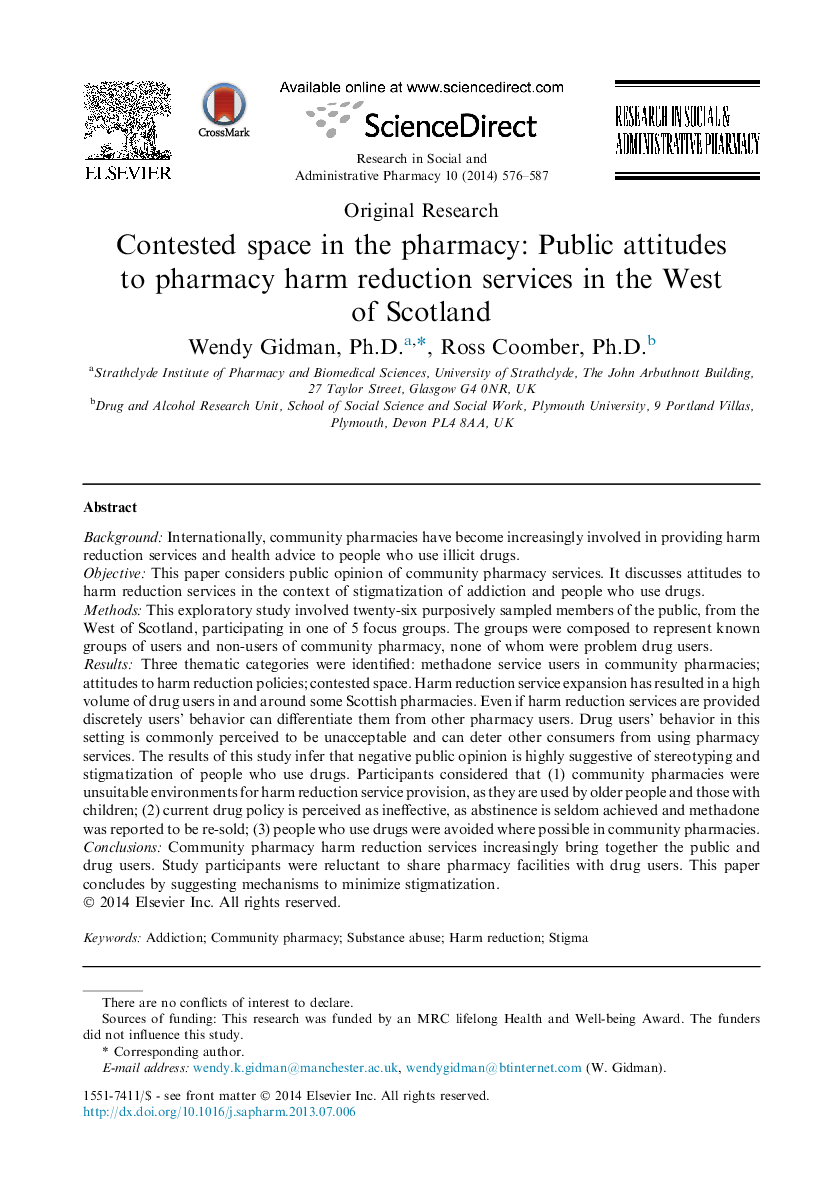| Article ID | Journal | Published Year | Pages | File Type |
|---|---|---|---|---|
| 2508609 | Research in Social and Administrative Pharmacy | 2014 | 12 Pages |
BackgroundInternationally, community pharmacies have become increasingly involved in providing harm reduction services and health advice to people who use illicit drugs.ObjectiveThis paper considers public opinion of community pharmacy services. It discusses attitudes to harm reduction services in the context of stigmatization of addiction and people who use drugs.MethodsThis exploratory study involved twenty-six purposively sampled members of the public, from the West of Scotland, participating in one of 5 focus groups. The groups were composed to represent known groups of users and non-users of community pharmacy, none of whom were problem drug users.ResultsThree thematic categories were identified: methadone service users in community pharmacies; attitudes to harm reduction policies; contested space. Harm reduction service expansion has resulted in a high volume of drug users in and around some Scottish pharmacies. Even if harm reduction services are provided discretely users' behavior can differentiate them from other pharmacy users. Drug users' behavior in this setting is commonly perceived to be unacceptable and can deter other consumers from using pharmacy services. The results of this study infer that negative public opinion is highly suggestive of stereotyping and stigmatization of people who use drugs. Participants considered that (1) community pharmacies were unsuitable environments for harm reduction service provision, as they are used by older people and those with children; (2) current drug policy is perceived as ineffective, as abstinence is seldom achieved and methadone was reported to be re-sold; (3) people who use drugs were avoided where possible in community pharmacies.ConclusionsCommunity pharmacy harm reduction services increasingly bring together the public and drug users. Study participants were reluctant to share pharmacy facilities with drug users. This paper concludes by suggesting mechanisms to minimize stigmatization.
